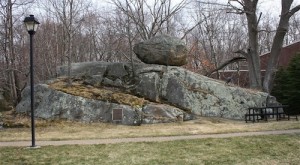
Of course there are! There have to be! Hundreds of thousands of human beings have walked and worked the New England uplands for at least 11,000 years. And many features have been confirmed as pre-Colonial by properly credentialed archaeologists.
But let us not conflate the few, the small, and the odd stone features in the woods with the latticework of abandoned stone walls gracing much of the New England countryside. This latticework of walls is the collective work of colonial and early American farmsteads built by Euro-settlers and their descendants since 1607.
Last night, while giving a talk to the Boxborough Conservation Trust in Massachusetts, I got the inevitable question about pre-colonial stone ruins. This morning, I decided to post my answer in the form of a keynote speech I gave several years ago to the New England Antiquities Research Association.